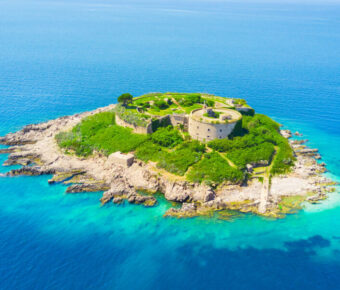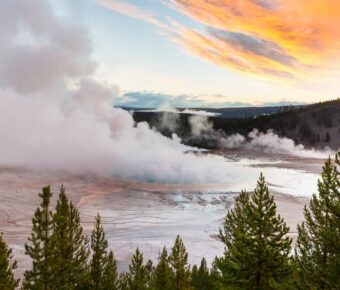
Pienza vs Orvieto: Which Hidden Tuscan Gem Should You Visit in 2025?
Nestled in the heart of central Italy, Pienza and Orvieto offer two distinct experiences for travelers seeking authentic Italian charm. Pienza sits in southern Tuscany’s picturesque Val d’Orcia, while Orvieto perches dramatically on a volcanic cliff in neighboring Umbria.
Both towns excel at different things. Pienza shines with Renaissance architecture and world-famous pecorino cheese, while Orvieto stands out for its stunning Duomo cathedral and ancient underground tunnels. A visit to either town rewards tourists with incredible views, rich history, and mouthwatering local cuisine.
These hilltop gems make perfect day trips from bigger cities, though each deserves time for proper exploration. Walking their narrow cobblestone streets reveals hidden corners filled with artisan shops, family-run restaurants, and spots where locals gather to watch sunset over the countryside.
Contents
- Historical Context and Significance
- Origins of Pienza
- Orvieto’s Etruscan and Medieval Past
- Papal Connections and Influence
- UNESCO World Heritage Status
- Cultural and Artistic Highlights
- Renaissance Art in Pienza
- Orvieto’s Gothic Cathedral
- Local Handicrafts and Shops
- Gastronomy and Wine Culture
- Pecorino Cheese and Culinary Delights of Pienza
- Wine Tasting in Orvieto and Surroundings
- Signature Dishes and Restaurants
- Accessibility and Transportation
- Getting to Pienza
- Access Routes to Orvieto
- Navigating Hill Towns
- Accommodation and Stay Recommendations
- Hotels and B&Bs in Pienza
- Lodging Options in Orvieto
- Experiencing Authentic Villas
- Day Trip Options and Itineraries
- Exploring Beyond Pienza
- Orvieto as a Launchpad for Exploring
- Seasonal Activities and Events
- Festivals in Pienza
- Cultural Celebrations in Orvieto
- Annual Wine Harvest
- Landscape and Natural Beauty
- Panoramic Vistas of Pienza
- The Dramatic Cliffs of Orvieto
- Nature Trails and Hiking
- Frequently Asked Questions
- What are the top attractions to see when visiting Pienza?
- Can you recommend some must-try local dishes in Orvieto?
- What are the accommodation options like in Pienza?
- Are there any unique shopping experiences in Orvieto?
- How does the cultural heritage of Pienza compare to that of Orvieto?
- What are some day-trip destinations from Orvieto that travelers should consider?
- More Travel Guides
Historical Context and Significance
Both Pienza and Orvieto stand as remarkable examples of Italian architectural innovation and cultural heritage, each shaped by distinct historical forces spanning from ancient times through the Renaissance.
Origins of Pienza
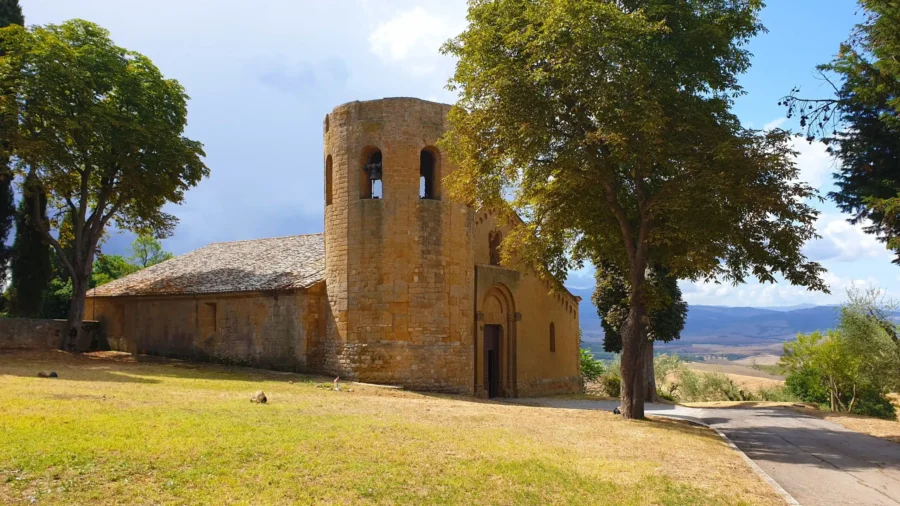
Pienza started as a small village called Corsignano in the heart of Tuscany. Its transformation began in 1458 when Pope Pius II decided to remake his hometown into an ideal Renaissance city.
The Pope hired architect Bernardo Rossellino to create a perfect urban center in just three years. This rapid makeover turned the humble village into a showcase of Renaissance urban planning and architecture.
The new city got a grand cathedral, papal palace, and town hall arranged around a beautiful main square. These buildings still show off the clean lines and perfect proportions that Renaissance architects loved.
Orvieto’s Etruscan and Medieval Past
The story of Orvieto goes back much further – to ancient Etruscan times. The city sits high on volcanic cliffs that made it a natural fortress.
The Etruscans built an extensive network of caves and wells beneath the city. These underground paths helped them resist Roman attacks for two years before falling in the 3rd century BC.
During medieval times, Orvieto grew into a powerful independent commune. The city’s striking position and strong defenses made it a key player in conflicts between popes and emperors.
Papal Connections and Influence
Both cities share deep ties to papal history. Orvieto served as a papal refuge in the 13th century when Rome became unsafe. Five popes lived here during this time.
Pienza’s entire existence as a Renaissance city came from Pope Pius II’s vision and funding. He saw it as a chance to show off the Church’s power through architecture and urban design.
The papal influence shows in both cities’ amazing cathedrals. Orvieto’s Gothic masterpiece took three centuries to complete, while Pienza’s cathedral displays perfect Renaissance style.
UNESCO World Heritage Status
Pienza earned UNESCO status in 1996 for being the first “ideal city” of the Renaissance. Its preserved urban design still teaches us about 15th-century planning ideas.
Orvieto’s old town got special recognition for its mix of medieval and Renaissance architecture. The dramatic setting on volcanic cliffs adds to its appeal.
Both cities keep strict rules about building changes and renovations. This helps protect their historic character for future visitors to enjoy.
Cultural and Artistic Highlights
Both Pienza and Orvieto showcase incredible Italian artistry from different periods, with Pienza’s Renaissance elegance contrasting Orvieto’s dramatic Gothic masterpieces. These towns preserve centuries of artistic heritage through architecture, paintings, and local crafts.
Renaissance Art in Pienza
Pienza stands as Pope Pius II’s perfect Renaissance city. The town’s main square features the stunning Palazzo Piccolomini, built in 1459 with elegant geometric proportions and a lovely hanging garden.
The Cathedral of Santa Maria Assunta holds beautiful 15th-century artworks. The most notable pieces include altarpieces by Sienese masters and detailed wooden choir stalls.
The Palazzo Comunale displays remarkable frescoes depicting scenes from daily life in Renaissance Tuscany. Its facade maintains the harmonious architectural style that makes Pienza a UNESCO World Heritage site.
Orvieto’s Gothic Cathedral
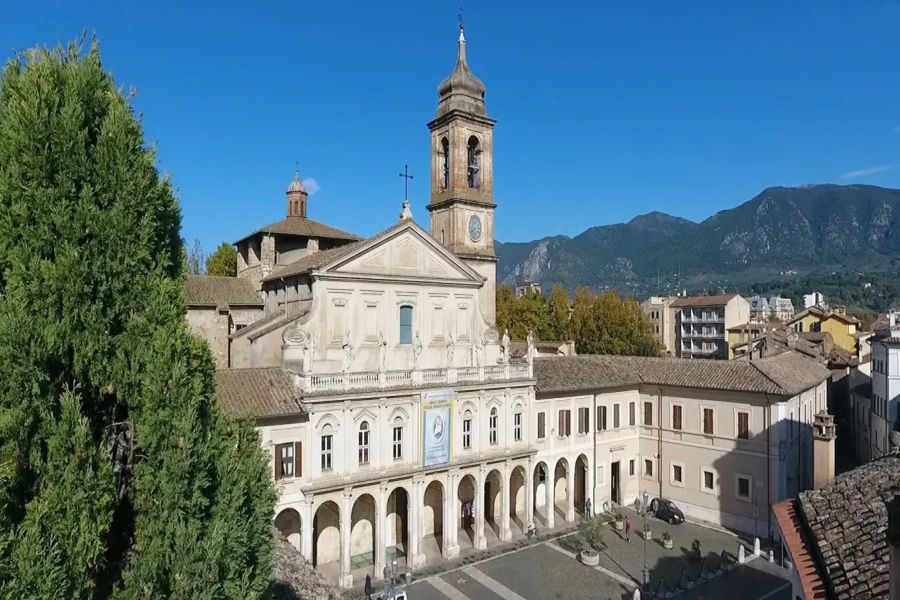
The Duomo of Orvieto is one of Italy’s most spectacular Gothic churches. Its striped marble facade glitters with golden mosaics, intricate carvings, and delicate rose windows.
Inside, the San Brizio Chapel features Luca Signorelli’s amazing frescoes of the Last Judgment. These vibrant paintings influenced Michelangelo’s work in the Sistine Chapel.
The cathedral houses precious religious artifacts in its museum, including ancient manuscripts and ceremonial objects.
Local Handicrafts and Shops
Pienza’s narrow streets are lined with shops selling locally-made ceramics and pecorino cheese. Many artisans still use traditional methods passed down through generations.
Orvieto excels in ceramics production. The distinctive white-and-blue majolica pottery reflects techniques dating back to medieval times. You’ll find workshops where artists demonstrate their craft.
Local galleries in both towns showcase contemporary artists who draw inspiration from the rich artistic heritage. Many offer hands-on workshops where you can try traditional crafting techniques.
Gastronomy and Wine Culture
Both Pienza and Orvieto shine as food and wine destinations, each offering distinct flavors that tell the story of their regions through local specialties and time-honored traditions.
Pecorino Cheese and Culinary Delights of Pienza
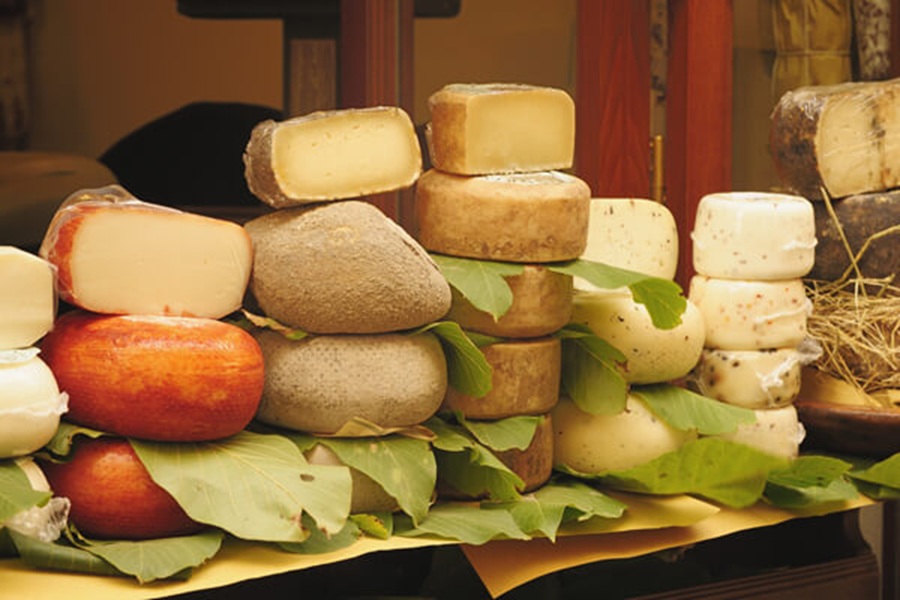
Pienza’s crown jewel is its world-famous Pecorino cheese, made from sheep’s milk and aged in various ways. Each variety offers unique tastes – from fresh and mild to aged and complex.
The tiny streets are filled with cheese shops where you can sample different ages of Pecorino. Many shops offer free tastings, letting you compare the subtle differences between young, medium, and aged varieties.
Local producers still use traditional aging methods, storing wheels in underground cellars. Some even age their cheese with walnut leaves, hay, or grape must for distinct flavors.
Wine Tasting in Orvieto and Surroundings
Orvieto’s signature white wine, Orvieto Classico DOC, stands out for its crisp, refreshing character. Made primarily from Trebbiano and Grechetto grapes, it pairs perfectly with local dishes.
The town sits amid rolling vineyards where you can visit family-run wineries. Many offer cellar tours showing the ancient underground caves where wine ages in oak barrels.
Some top wineries organize tasting sessions that include food pairings with regional specialties. The best time to visit is during harvest season from late August through October.
Signature Dishes and Restaurants
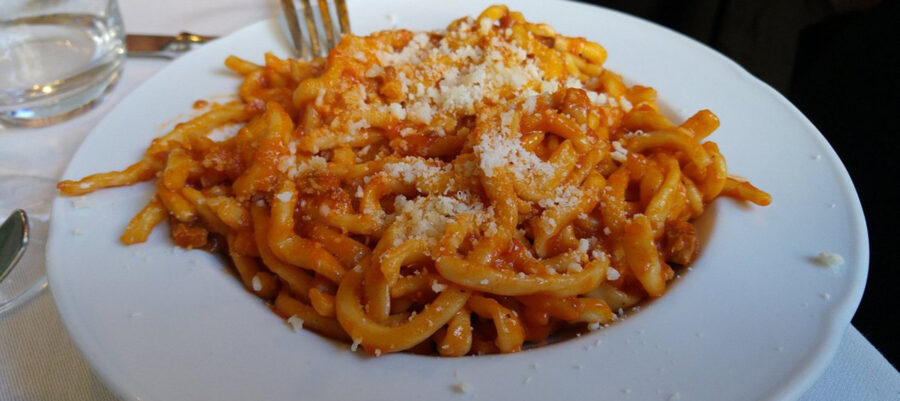
Pienza’s restaurants focus on simple Tuscan cooking using local ingredients. Try the pici pasta – thick, hand-rolled noodles served with sheep’s milk cheese or wild boar sauce.
Orvieto’s cuisine features black truffles from nearby forests. Local specialties include umbrichelli pasta and slow-cooked pigeon. Many restaurants offer outdoor seating with views of the Umbrian countryside.
Both towns have gelato shops using local ingredients like Pienza’s sheep’s milk or Orvieto’s fresh nuts. The best spots make their gelato daily in small batches.
Small family-run trattorias often offer the most authentic dining experiences. Make reservations for dinner, especially during peak season from May through September.
Accessibility and Transportation
Both Pienza and Orvieto present unique travel challenges due to their hilltop locations. Access routes vary by train, bus, and car connections from major Italian cities.
Getting to Pienza
Reaching Pienza takes extra planning since it lacks direct train service. Buses run from nearby Chiusi-Chianciano Terme train station, with trips lasting about 45 minutes.
Driving offers more flexibility for visiting Pienza. The main route follows the A1 motorway to Chiusi, then connects to the SP146 regional road leading straight to town.
Many travelers combine Pienza visits with stops in Montepulciano or Montalcino using rental cars to maximize sightseeing time.
Access Routes to Orvieto
Orvieto enjoys excellent rail connections on the main Florence-Rome line. Fast trains from Rome take just over an hour, while Florence trips run about 2 hours.
A funicular railway links the train station to the historic center. The cable car ride takes 2-3 minutes and offers amazing valley views.
Driving to Orvieto means taking the A1 motorway between Rome and Florence. The town sits right off the highway with clear signs to parking areas.
Both towns feature steep streets and steps. Comfortable walking shoes are essential for exploring.
Orvieto runs a mini-bus service around its historic center. The small electric buses fit the narrow lanes perfectly.
Most parking sits outside the town walls. Pienza offers lots near Porta al Prato, while Orvieto maintains several garage options near the funicular station.
Cars aren’t needed inside either town since the historic centers are compact and walkable. Save your vehicle for day trips to nearby villages.
Accommodation and Stay Recommendations
Both Pienza and Orvieto offer unique places to rest your head, from historic buildings turned boutique hotels to rustic farmhouses with stunning views.
Hotels and B&Bs in Pienza

Pienza’s small size means most accommodations in Tuscany sit within walking distance of the town center. Many rooms offer breathtaking views of the Val d’Orcia countryside.
The 19th-century farmhouses around town blend rustic charm with modern comforts. These properties often include perks like bike rentals and wine tastings from their vineyards.
Small family-run B&Bs in converted Renaissance buildings give guests a taste of authentic Tuscan life. Many serve fresh local breakfast spreads with pecorino cheese and homemade pastries.
Lodging Options in Orvieto
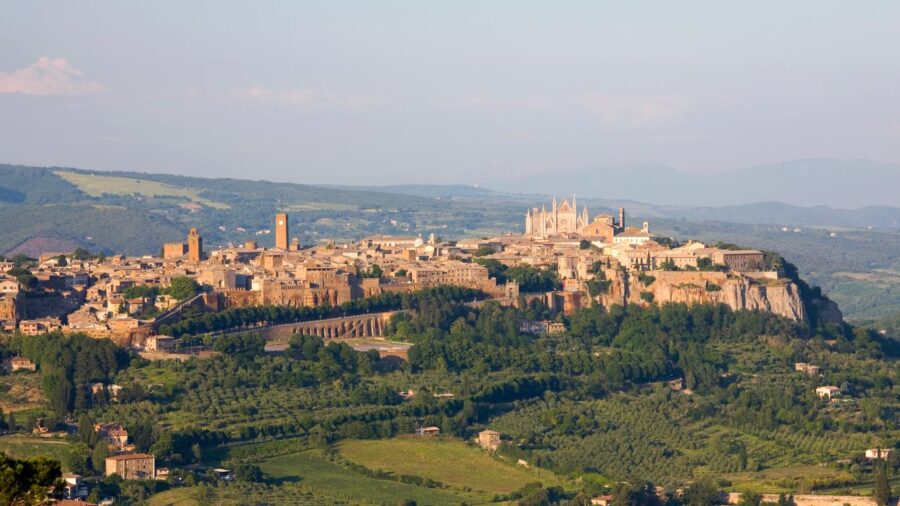
The dramatic clifftop setting of Orvieto creates unique accommodation choices. Some hotels carve rooms directly into the tufa rock, creating cool spaces in summer.
La Badia di Orvieto, a restored 12th-century abbey, lets guests sleep where cardinals and popes once stayed. The thick stone walls and ancient architecture transport visitors back in time.
Hotels in the medieval quarter put guests steps from the Duomo and main shopping streets. Many rooms feature exposed stone walls and wooden beam ceilings.
Experiencing Authentic Villas
Private villas around both towns offer space and privacy for families or groups. Most come with pools and outdoor dining areas perfect for long Italian meals.
Restored farmhouses in the Umbrian countryside near Orvieto give guests a peaceful retreat. Many properties include olive groves and vegetable gardens guests can enjoy.
Pienza area villas often sit on working farms, letting visitors watch cheese-making or join grape harvests. Some owners offer cooking classes using ingredients from their land.
Day Trip Options and Itineraries
Both Pienza and Orvieto serve as perfect starting points to explore the stunning regions of Tuscany and Umbria. These towns offer easy access to some of Italy’s most cherished destinations.
Exploring Beyond Pienza
Pienza sits in the heart of Val d’Orcia, making it perfect for visiting nearby gems. A quick 20-minute drive leads to the wine town of Montepulciano, famous for its cellars and medieval streets.
Book tours and activities to explore these spots from Pienza:
- Siena (1 hour drive): Visit the famous Piazza del Campo
- San Gimignano (2 hours): Known for medieval towers
Orvieto as a Launchpad for Exploring
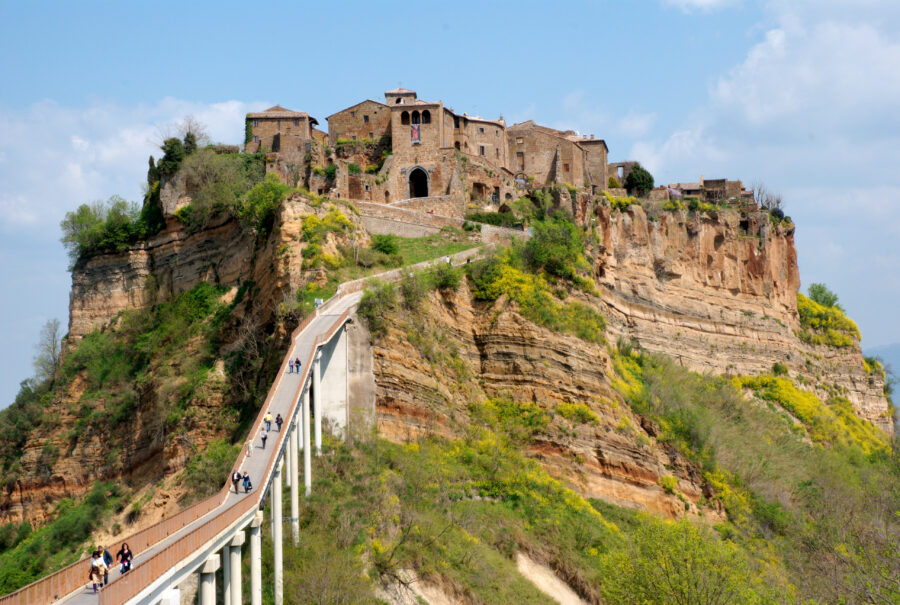
Orvieto’s train station makes day trips simple and stress-free. The beautiful Civita di Bagnoregio sits just 30 minutes away by car, offering stunning views across the valley.
Popular day trips from Orvieto include:
- Rome (1.5 hours by train)
- Florence (2 hours by train)
- Assisi (2 hours by car)
Many tourists mix a morning in Orvieto with an afternoon visit to the thermal springs of Saturnia. The drive takes about 2 hours each way.
Train connections run frequently between Orvieto and major cities. The station sits at the base of the cliff, with a funicular taking visitors up to the historic center.
Seasonal Activities and Events
Both Pienza and Orvieto come alive throughout the year with vibrant festivals, cultural celebrations, and wine-related events that showcase their rich heritage and traditions.
Festivals in Pienza
The Fiera del Cacio cheese festival takes place each September in Pienza’s main square. Local pecorino makers display their prized sheep’s milk cheeses while visitors sample different aging varieties.
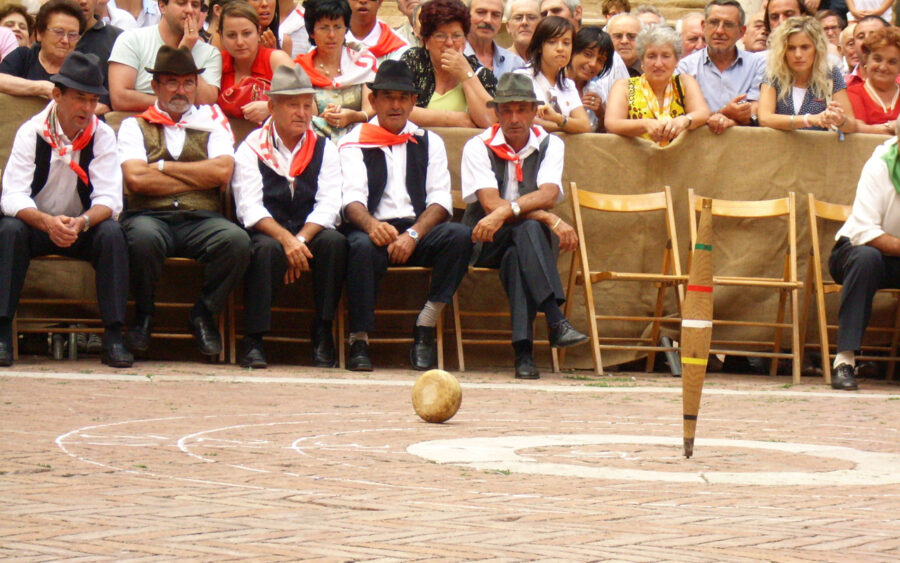
Medieval flag-throwing shows and traditional music fill the streets during the Festa della Madonna in August. The whole town dresses in Renaissance costumes for lively parades.
Spring brings the colorful Pienza Flower Festival, when locals decorate their balconies and windows with gorgeous blooms. The narrow streets transform into fragrant gardens.
Cultural Celebrations in Orvieto
The Corpus Domini festival in June features a grand procession where citizens carry the miraculous cloth from the Duomo through torch-lit medieval streets. This 700-year tradition draws thousands.
The Winter Jazz Festival warms up December nights with performances in historic palazzos and wine cellars beneath the city. Musicians from across Italy gather to play.
Underground cave tours reveal ancient Etruscan tunnels during the Orvieto Underground festival in October. Guides lead visitors through candlelit passages carved into volcanic rock.
Annual Wine Harvest
Both towns host grape harvest celebrations from late August through October. Visitors can join grape picking in local vineyards and watch traditional pressing demonstrations.
In Orvieto, the Orvieto Classico white wine flows freely at harvest parties in centuries-old cellars. Local vintners offer tastings of new vintages alongside regional foods.
Pienza’s wine events focus on noble reds like Brunello and Vino Nobile produced in nearby vineyards. Evening festivities pair wines with the town’s famous pecorino cheese.
Landscape and Natural Beauty
The rolling hills of Tuscany provide stunning natural backdrops for both Pienza and Orvieto. These two towns offer unique views and settings that make them special in their own ways.
Panoramic Vistas of Pienza

Pienza sits gracefully atop a hill in the stunning Val d’Orcia region. The town’s elevated position gives visitors endless views of gentle rolling hills dotted with cypress trees and golden wheat fields.
The most breathtaking views can be found along the walkway near Palazzo Piccolomini. From here, you’ll see the iconic Tuscan landscape that attracts photographers from around the world.
The surrounding countryside changes colors with the seasons – bright green in spring, golden yellow in summer, and rich browns in fall. Scattered farmhouses and vineyards complete the picture-perfect scenery.
The Dramatic Cliffs of Orvieto
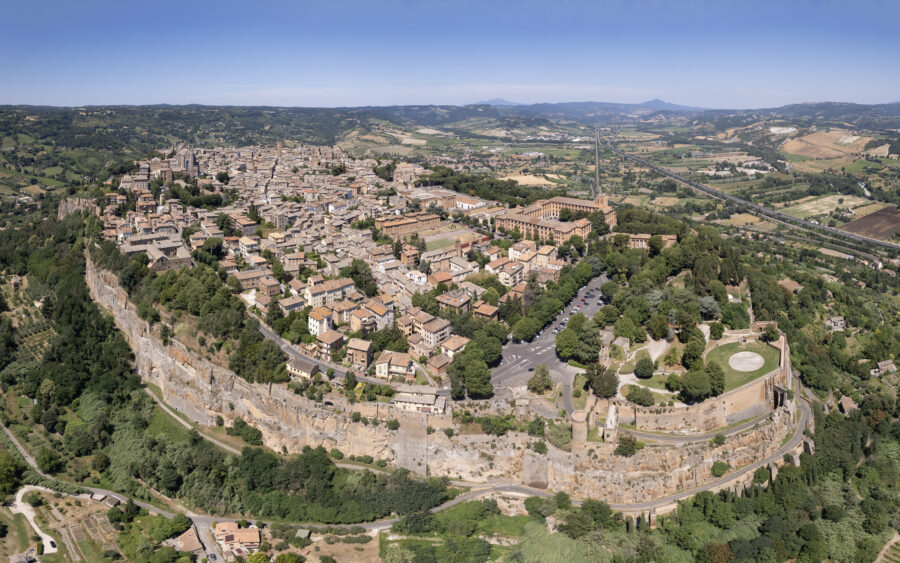
Orvieto rises dramatically from massive volcanic cliffs, standing 1,000 feet above the valley floor. These towering tufa rock walls create a natural fortress that protected the town for centuries.
Walking around the cliff edges gives visitors spectacular views of the surrounding Umbrian countryside and valleys below. The volcanic rock formations add a rugged beauty to the landscape.
A network of caves and tunnels runs through the cliffs, carved out by ancient Etruscans. These underground passages tell stories of the town’s rich past while adding to its unique natural setting.
Nature Trails and Hiking
Both towns serve as great starting points for nature walks and hikes. Pienza offers easy trails through the Val d’Orcia, perfect for exploring the classic Tuscan landscape up close.
The paths around Orvieto’s cliffs range from casual walks to more challenging hikes. The Anello della Rupe trail circles the entire cliff base, giving hikers amazing views of the rock walls above.
Spring and fall bring the best hiking weather, with mild temperatures and clear skies. The trails are well-marked and connect to nearby villages and attractions.
Frequently Asked Questions
Pienza and Orvieto offer unique experiences with remarkable landmarks, local flavors, and distinct cultural identities that make each destination special. These cities provide different accommodation styles, shopping choices, and connections to nearby attractions.
What are the top attractions to see when visiting Pienza?
Pienza’s crown jewel is the Piazza Pio II, which showcases perfect Renaissance urban planning. The impressive Pienza Cathedral stands at its center with stunning views of Val d’Orcia.
The Palazzo Piccolomini features beautiful gardens and architecture that exemplifies 15th-century design. Its loggia offers breathtaking views of the countryside.
Visitors love walking along Via dell’Amore and Via del Bacio, two romantic streets with picture-perfect views of the Tuscan landscape.
Can you recommend some must-try local dishes in Orvieto?
Orvieto’s signature pasta dish is umbrichelli, thick hand-rolled spaghetti served with black truffle or wild boar sauce.
The city takes pride in its wild pigeon dishes, prepared according to ancient recipes dating back centuries.
Local wines include the famous Orvieto Classico, a crisp white wine that pairs perfectly with the region’s traditional dishes.
What are the accommodation options like in Pienza?
Pienza offers charming boutique hotels housed in restored Renaissance palazzos. Many rooms feature original frescoes and period furniture.
Farm stays (agriturismos) near Pienza let guests experience authentic Tuscan countryside living. These properties often produce their own cheese, wine, and olive oil.
Small family-run B&Bs in the historic center provide intimate, personal experiences with local hosts.
Are there any unique shopping experiences in Orvieto?
The streets around Orvieto Cathedral showcase local artisan workshops selling handmade ceramics with distinctive patterns unique to the region.
Traditional textile shops offer handwoven items made using ancient Umbrian techniques.
The weekly market in Piazza del Popolo sells local produce, cheeses, and crafts every Thursday morning.
How does the cultural heritage of Pienza compare to that of Orvieto?
Pienza represents Renaissance ideals with its perfectly planned city layout and harmonious architecture. The entire town is a UNESCO World Heritage site.
Orvieto’s heritage spans multiple eras, from ancient Etruscan caves to medieval towers and Renaissance art. Its underground network of caves tells stories of ancient civilizations.
What are some day-trip destinations from Orvieto that travelers should consider?
The charming town of Civita di Bagnoregio sits just 30 minutes from Orvieto. This “dying city” perches dramatically on an eroding plateau.
Lake Bolsena makes a perfect summer excursion, offering beaches, water sports, and fresh fish restaurants.
The medieval town of Todi lies 45 minutes away, featuring well-preserved architecture and excellent regional restaurants.
